According to experienced business specialists, the key to gaining new customers is to cover more channels of communication with potential clients. Sales platforms such as Stripe, PayPal, Shopify, and eBay provide your customers with an easy and convenient way to complete purchases online so that business owners can enjoy the benefits of an incoming stream of customers. However, many business owners struggle to handle the accounting part that might seem tricky at first glimpse. Very often, businesses with both offline and online sales face difficulties gathering all sales info in one place.
This is where Synder comes into play, being a smart accounting system Synder mirrors the actual money flow happening in your Clover and records live transactions and historical data in your accounting system providing you with precise tax, item, and other transaction details. With Synder, you will be able to track inventory and run accurate Profit and Loss reports with all the details auto-reflected by Synder for efficient analytics of your business.
Follow easy steps in this helpful guide, and enjoy seamless synchronization with Synder.
Overview:
Start the Clover integration from scratch
1. Create an account
If you’re getting started with Synder you’ll need to create a free Trial account and connect your accounting system first. Check out this guide if you would like to integrate your payment platform with QuickBooks Online or Xero, and this article to connect your QuickBooks Desktop company.
2. Provide your business details
Going through the set-up process of an Organization for your QuickBooks/Xero company, fill in the information about your business and hit the Next step button.
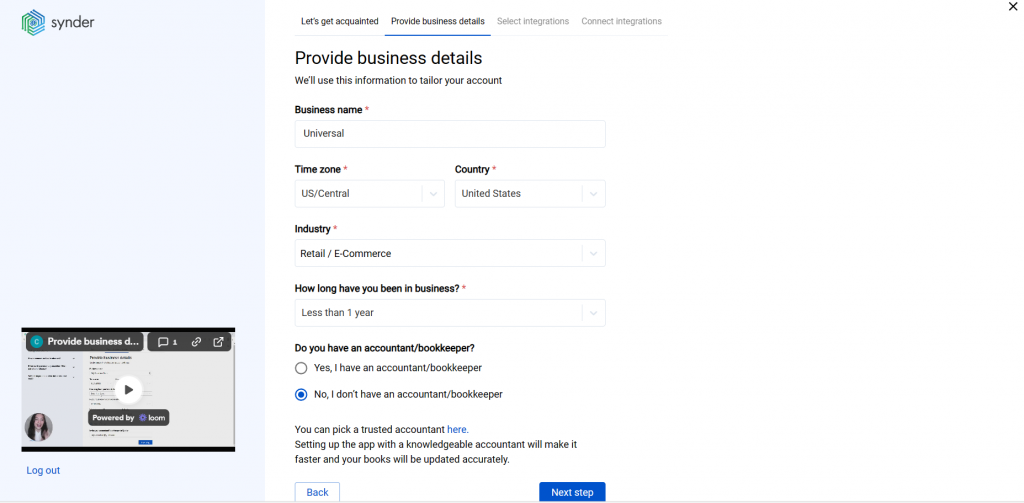
3. Select the platforms you’d like to integrate
Now you need to select the platforms you would like to connect to Synder. Click View all integrations to see the list of all available platforms.
Note: Mark all the services you are using to receive payments, you will be able to connect all of them right away or skip the connection of particular integrations and set them up any time later.
4. Connect your accounting platform
Select the accounting company you’d like to connect to Synder and click on Next step.
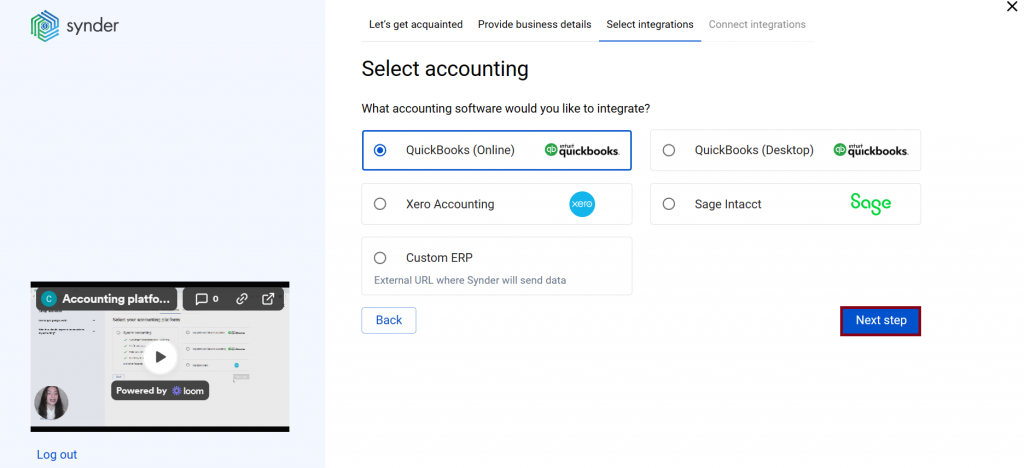
Note: If you are connecting QuickBooks Online or Xero, you will be prompted to select the sync mode. Proceed with the desired option.
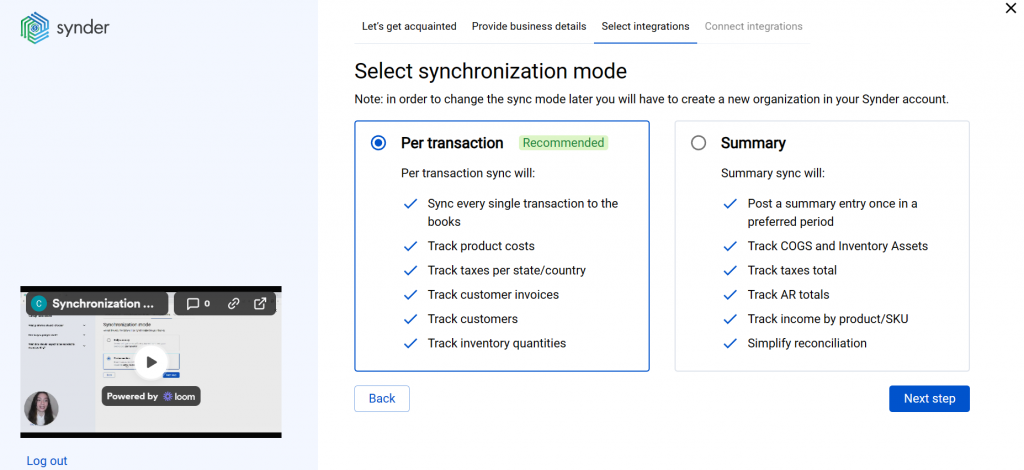
Click on Connect to connect your accounting company.
5. Connect your Clover account
Almost there! To complete the setup, you just need to connect your Clover and other sales platforms to Synder. Click on Connect if you are an admin, or Invite account owner if you do not have admin access in Clover.

You can integrate other sales platforms one by one straight away or skip the connection for other additional payment processors and set them up later in the Settings:
a. Click on the Person icon in the upper-right corner and select Organization settings.
b. In the Integrations section, click Add integration.
c. Select the integration you’d like to connect and click Connect. If you don’t have admin rights, send an invitation to the account owner.
Note: You can find our detailed guides on how to connect your sales channels and payment providers to your accounting via Synder in our Help center.
Tips and tricks on the Clover integration
Note 1. Synder currently imports gross amounts from Clover, which means that fees and payouts need to be entered manually in your accounting system.
- Fees: you may want to create one batch expense for all the fees for a week or a month instead of entering each fee.
- Money transfers: you may need to create transfers in your accounting company from the Clover clearing to your business checking account to zero out the clearing account and reconcile checking.
Note 2. Synder mirrors real money flow in your accounting by recording live sales in the Clearing account (Clover (required for Synder) in your books) that Synder creates automatically during the initial setup.
Note 3. Synder protects your data with two flagship features: duplicate detector and rollback. You can give yourself peace of mind knowing that all the power is in your hands and your accounting is secured.
Note 4. Get familiar with the software in our 3 Must-Watch beginner guides and Features of Synder taking your experience to the next level to find out how Synder can help you automate your bookkeeping.
Reach out to the Synder team via online support chat, phone, or email with any questions you have – we’re always happy to help you!

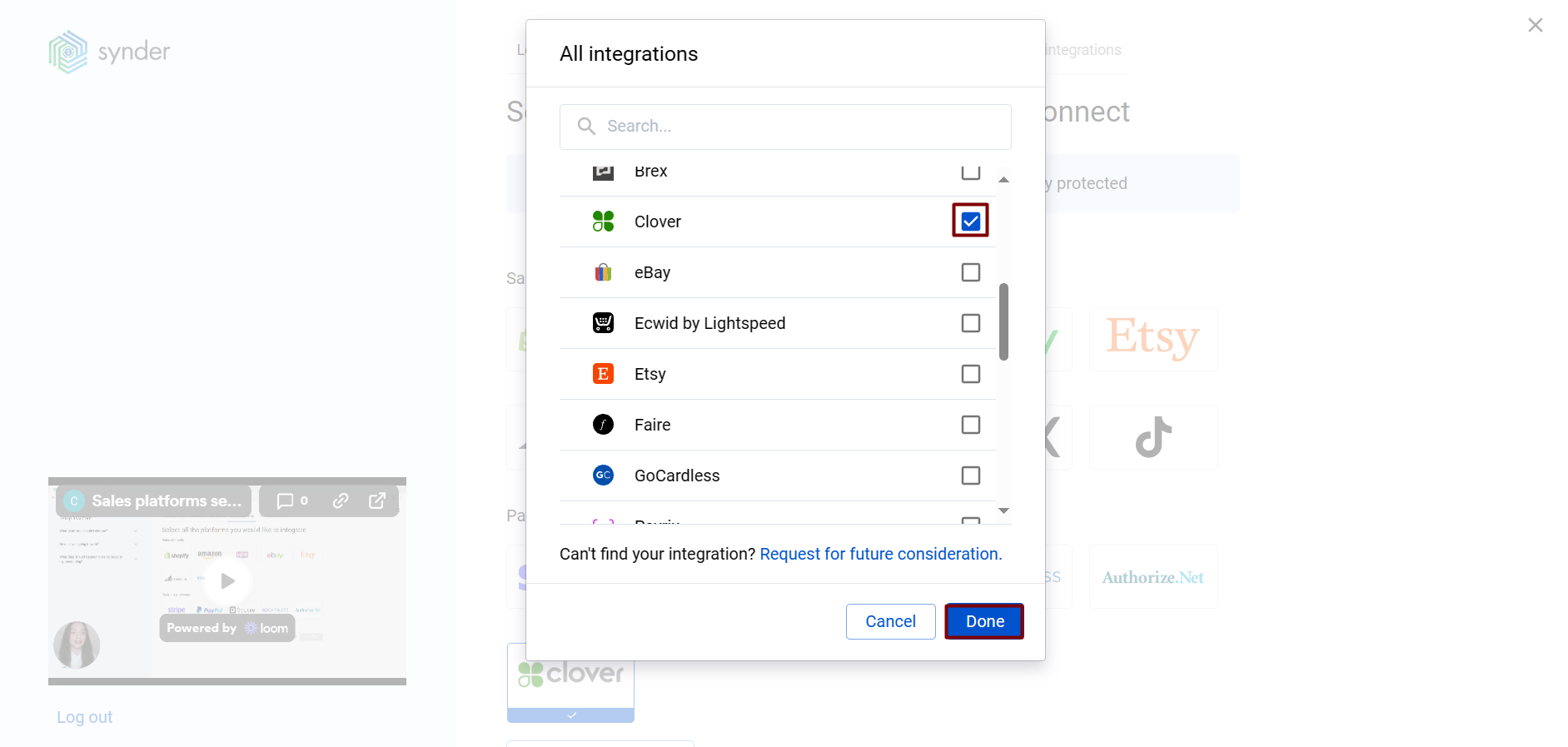
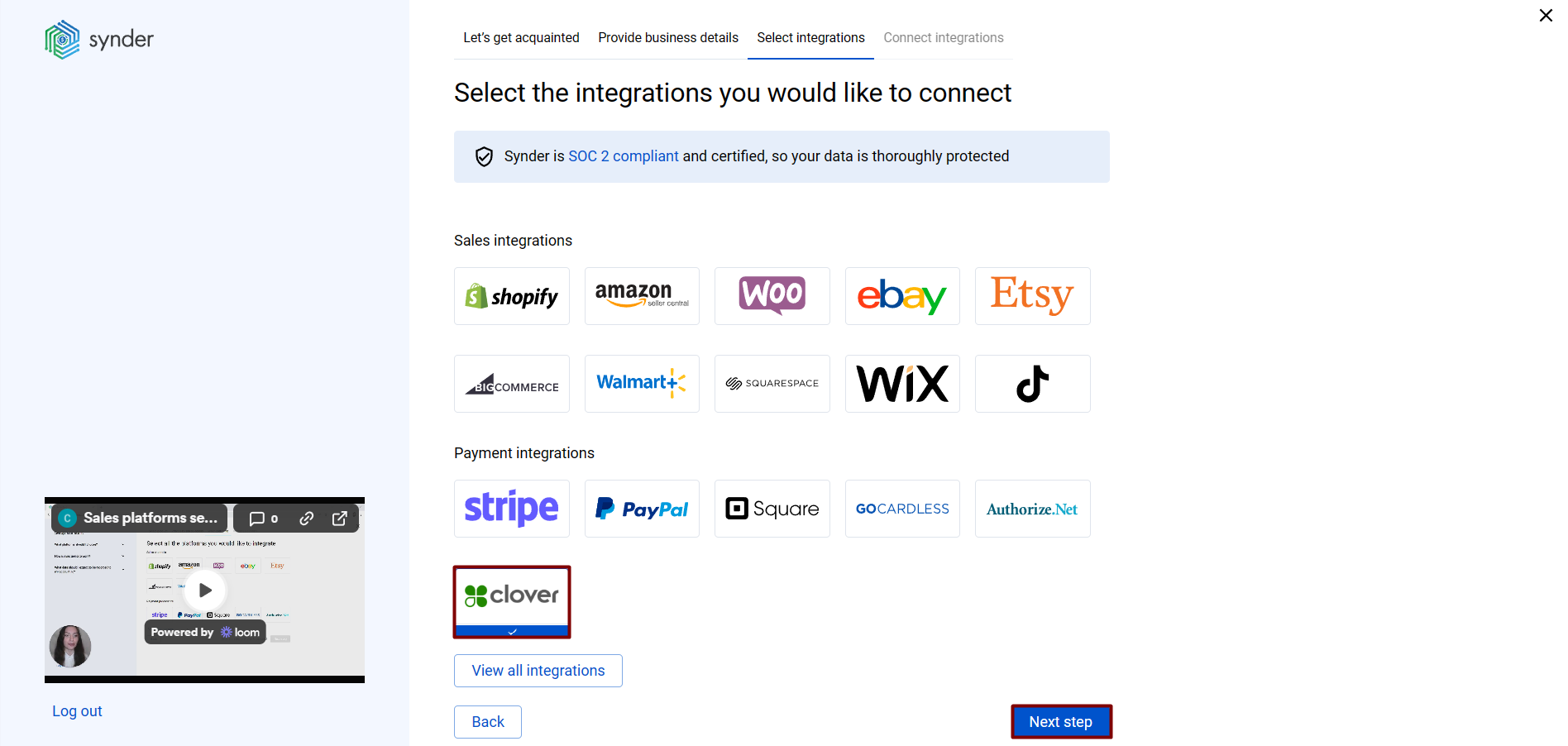
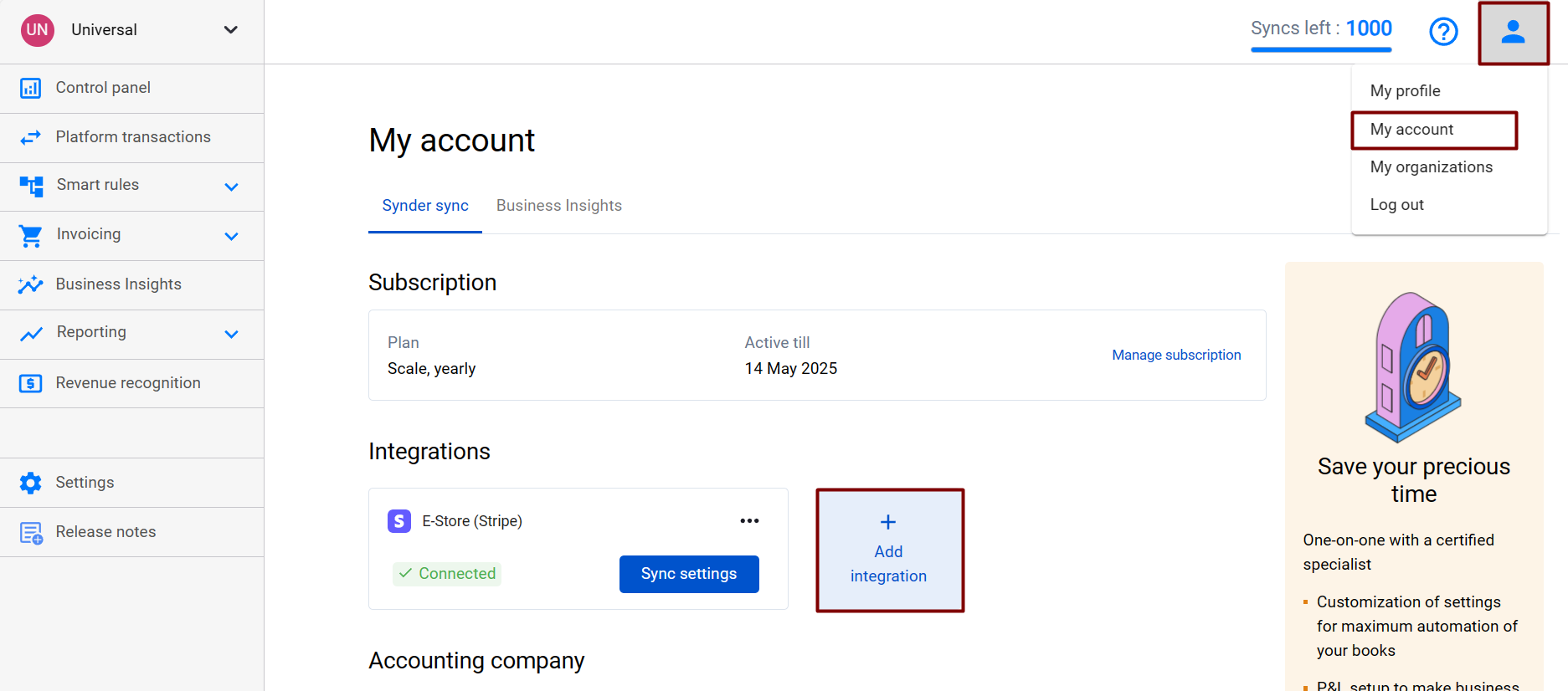
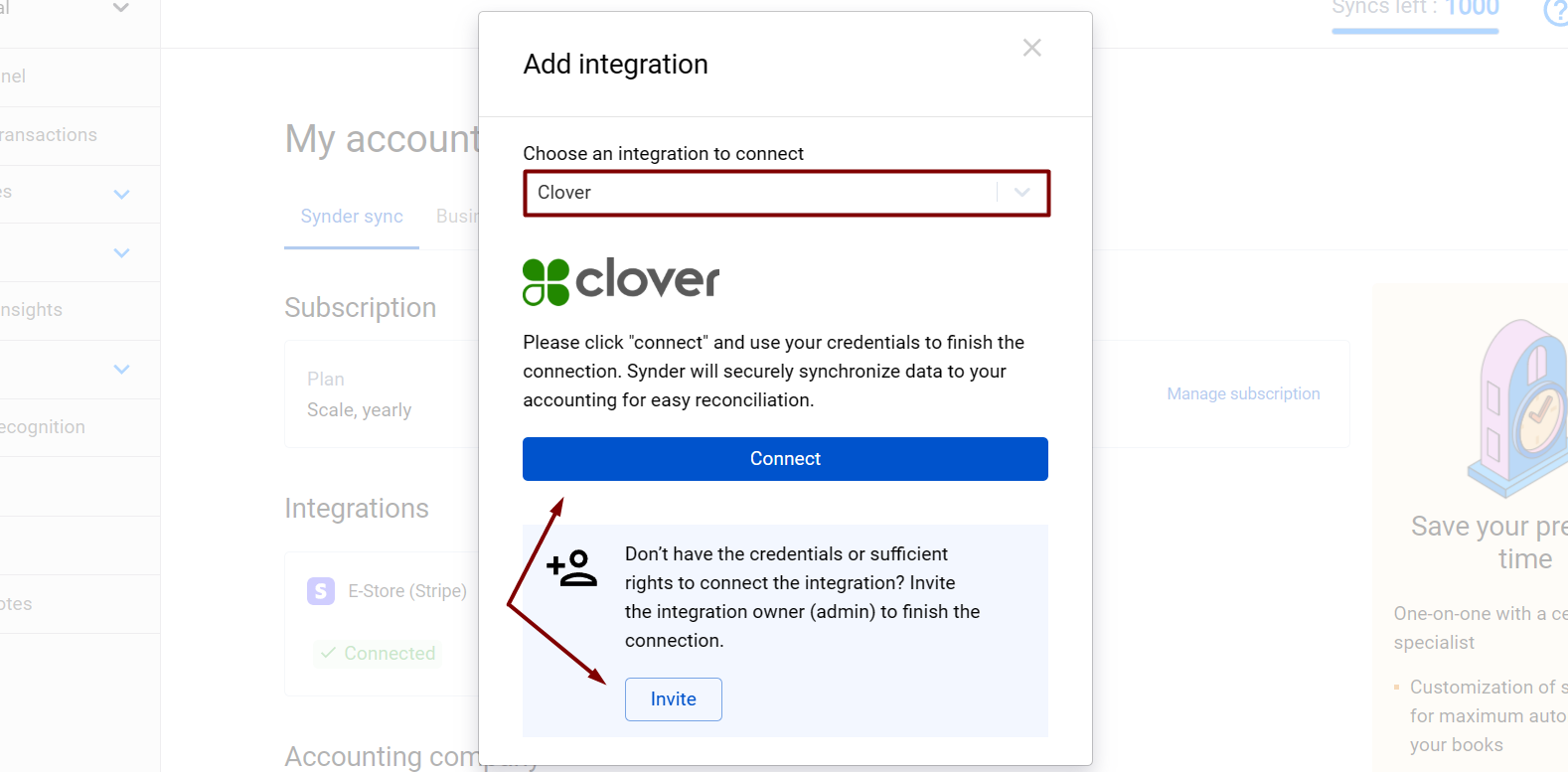
I use Clover and have lots of Product Names/SKUs, but only a few QuickBooks accounts (Food, Alcohol, Non-Alcohol), maybe could use a couple more like Appetizers and Merchandise, but all transactions can be grouped into one of these 3-5 accounts.
Is there a way to avoid 50 line items each day which are billed as transactions, so that I only create the line items associated with the 3-5 accounts so I can get control of the credits I use?
Hello Scott,
Thank you for your question. To reduce the number of items created, you can consider using Summary mode. It allows grouping by products/SKUs and mapping these product lines to the needed income accounts. This results in fewer objects created in your accounting company. Please note that individual transactions will be combined into one summary, but the total number of credits spent will remain the same.
Please let us know if this helps.
Hi there, is there a demo available for Xero / Clover integration. I am looking to confirm this acts the same as the stripe / xero integration. Thanks!
Hello Mackenzie!
Currently, there is no demo recording for the Xero/Clover integration. However, the logic is exactly the same as for the Stripe/Xero integration, with one exception: Synder will process only gross amounts from Clover. If you’d like, we can schedule a personal demo to discuss the Xero/Clover integration in more detail. Kindly contact us at [email protected] if you’re interested.